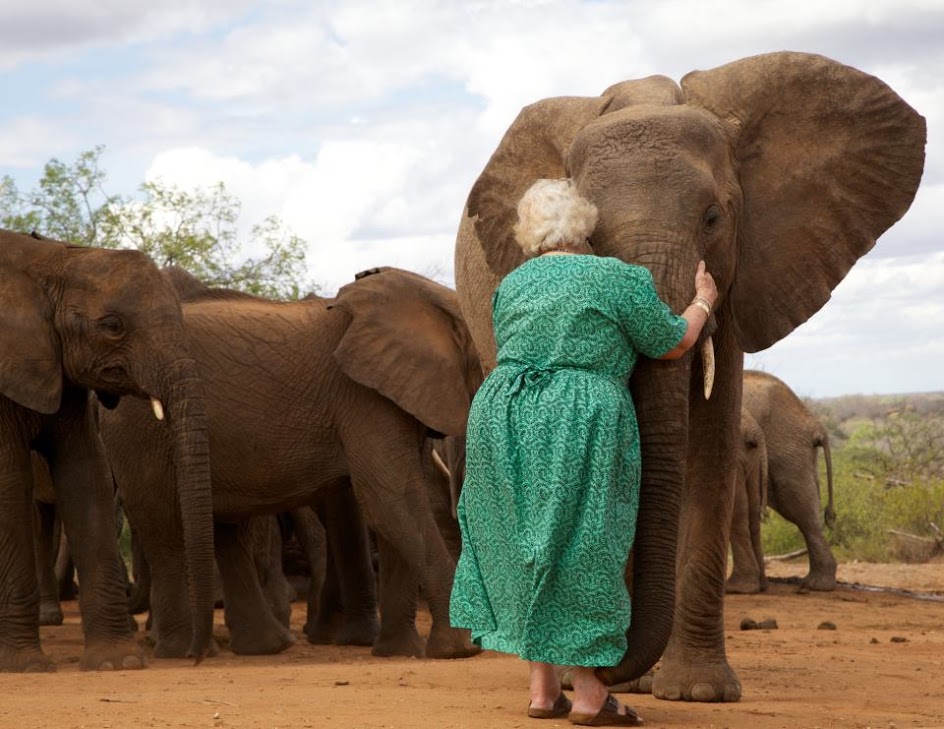Frown and you frown alone, but smile and the whole world smiles with you.
With 19 variations on the smile, including 16 produced by enjoyable emotions, smiling is an incredibly important part of our lives. Here's how to develop your grin.
1. Become comfortable with smiling. If you're not used to smiling regularly, overcoming your nervousness or cynicism about smiling can take a little practice but like any habit, it's easy to reform with time. Some things to keep in mind include:
A smile always looks good. Feeling nervous about the beauty or appearance of your smile is unnecessary. Trust that your smile makes you look great.
A smile is professional. Smiling at work or during other professional occasions is not going to make you seem unprofessional. Quite the opposite, a smile will humanize you and make you appear more approachable. People will appreciate your recognition of their worth and of a job well done when you smile.
A smile makes you real. If you're afraid of appearing vulnerable when you smile, accept that any form of vulnerability suggested by a smile is precisely what makes it such a powerful act. You're opening yourself up to others and people will respond better to that than to a serious, unmoved demeanor. Moreover, a smile accompanied by an assertive personality will take care of any sense that people will use your smile to walk all over you!
2. Make your smile genuine. While it is perfectly possible to crack a smile when you feel terrible, angry, annoyed, or you're up to something nefarious, a genuine smile is much harder to fake; indeed, only around 10 percent of the population can manage that feat.
A genuine smile is detectable by others because it is accompanied by a general glow, smiling eyes where the outer corners crinkle and the lower lid tightens, and a reassuring demeanor that helps the viewer to feel more at ease in your presence. A genuine smile comes from being happy, positive, and from drawing your feelings from the heart.
Think happy thoughts. The easiest way to a fantastic, genuine smile is to be happy. Think about someone you care about (perhaps the person standing in front of you as you smile), about something that you genuinely love to do, or think of a funny joke that you just find hilarious. Or think about the happiest moments in your life.
Be genuine. Draw on your heartfelt feelings, not just rationalizations. When you're confronted by a person or situation that makes you feel ambivalent and you're oscillating between giving the cold shoulder or smiling, err on the side of smiling – find one single thing in your heart that is positive about the person or situation before you, and use that to create your smile.
Love people and your life. It's much easier to produce friendly, easygoing, genuine smiles when you love what you do, when you love the people around you, and when you love humanity in general. Be grateful for all that you have and you'll find smiles come far more naturally.
Be playful. Intense times can make us too serious. See life as an adventure, be gentle on yourself and watch children at play. Being playful will bring a smile to your face much more easily.
3. Smile with your eyes. A wholehearted smile will naturally draw in the eyes (called a Duchenne smile). It is commonplace to hear a person say "her eyes were smiling", or to say "he didn't mean it; he was smiling but his eyes weren't". The eyes are essential for a genuine, warm smile. Your eyes light up, twinkle, and reflect your happiness. While it's hard to fake this unless you're really feeling it, you can try this exercise:
To get a feel for how to make your eyes smile, stand in front of a mirror and practice smiling, but concentrate only on your eyes. You may find it helpful to cover the lower part of your face with a piece of paper. Play around with it a bit, and you'll find that you can make your mouth smile when your eyes aren't smiling, and you can also smile only with your eyes. When your eyes do smile, remember how it feels, which muscles are working and how. With practice, you may discover how to smile with your eyes at will by relying on your feelings and muscle memory.
4. Practice your smile. There is no harm in practicing your smile – doing so will increase your smiling confidence, improve your sense of well-being, and help you to learn which of your smiles are your best.
Look at photos of yourself smiling, with a closed mouth, open mouth, and from different angles. Which smiles and poses make your face light up the most? Which smile displays your other features to their best possible advantage? Which smile comes across as the most natural, the most "you"?
Find that picture and focus on what your face is doing. Then practice in front of a mirror until you get it just right. Keep practicing, and pay attention to how that great smile feels, so that you'll be able to replicate it without looking in a mirror. Soon it will become second nature, and you'll likely find that you'll look more photogenic in your next batch of pictures.
If you want to improve your smile, look at pictures of smiles you believe are beautiful. Also, remember that you're beautiful (inside and out); your smile is bound to look better if you feel good about yourself!
Note the difference between a smile and a grin. Grins bare a lot more teeth (think Cheshire Cat) and are not necessarily flattering on all people, although for some people they can make you appear cute. If you're prone to grinning and it's not doing your appearance any favors, try showing only your upper teeth when you smile. Showing your lower teeth can make it seem you're baring your teeth.
When showing teeth, pressing the tongue behind the teeth will make small gaps look less noticeable.
Practice smiling at random strangers. Make a choice that you'll do this, make brief eye contact with a person, and smile. As you do so, think happy thoughts (it helps to choose someone attractive to begin with). Don't choose a person with sunglasses; you need to see their eyes. Not everyone will smile back but note how you feel when they do!
5. Maintain good oral hygiene. One thing that can cause you to fear smiling is the worry that there is something stuck between your teeth, or that you have bad breath. Eliminate these hygiene sources of worry by taking active steps to keep your mouth fresh and clean.
Brush your teeth and tongue regularly, carry floss with you wherever you go so that you can clean up after dining, and have breath freshener on you at all times (natural or commercial).
See your dentist regularly for teeth check-ups and cleaning, as well as discussing options for teeth straightening, etc., if this is a concern for you. When you smile people will inevitably look at your mouth, so following these considerations will help you make a better impression, and, more importantly, a healthy mouth will make you feel more confident about smiling.
If your teeth are stained, consider your lifestyle habits that bring this about and try to minimize the impacts of such habits as smoking or drinking too much red wine, coffee, soft drinks, etc.
Keep your lips in great shape to prevent chapping.
Deal with bad breath. If it's surface, cleaning and fresheners should be adequate. If these do not work, it may be a sign of an underlying health problem, so see your doctor for advice.
6. Expect smiling to be difficult in some situations. Smiling on demand can be difficult, whether it's for a photo or for the sake of keeping mom happy when the relatives you can't stand visit. This is because you are feeling self-conscious or you lack a genuine reason for smiling. In these sorts of cases, smiling needs to come from your memory of good smiles along with a little self-kidding or jokes in the head.
For a photo, smile 20 percent more than you think you should.
Smile wide and show the top row of teeth.
7. Enjoy the many benefits of a smile. In order to want to smile, it really helps to know what benefits a smile can bring to your day. The following benefits are bound to make you lean towards sharing a grin with others most of the day:
Smiles improve your appearance. Charles Gordy once quipped: "A smile is an inexpensive way to change your looks". All you need to do is think about how you feel about a person who is frowning and a person who is smiling – who tends to be the better looking?
Smiles make things right again and say much more than words can. If you've goofed, said something less than complimentary, feel lost or alone, or feel down, a smile can restore the balance. It lets other people know that you're prepared to be open with them, and that you're willingly agreeing to make amends where needed.
Smiles create trust and rapport. A smile is a great way of establishing mutual feelings of being on the same level as others, whether that is one-to-one or in front of a group giving a presentation. It says "I'm OK, you're OK, and we're all going to enjoy one another's company."
Smiles make you feel good. Even if you're feeling a little blue, insert happy thoughts into your mind and just add that smile. It will trick your mind into feeling better, as endorphins are released to reduce physical or emotional stress.
Smiles make other people feel good. An open-mouthed smile is visible from further away than a frown, offering people reassurance that you're friendly. And it makes people feel better to see a smile, from afar or close-up.
Wrinkles are better when they're smile lines rather than frown lines. Mark Twain said: "Wrinkles should merely indicate where smiles have been"; viewed this way, smiles are an indication of your overall character, which becomes more and more outwardly telling as you age!
Smiling is a good long-term predictor of happier life outcomes. It's correlated with health, happiness, friends, success, and a longer life.
Source: wikihow.com
Google+: Reshared 4 times
Google+: View post on Google+














